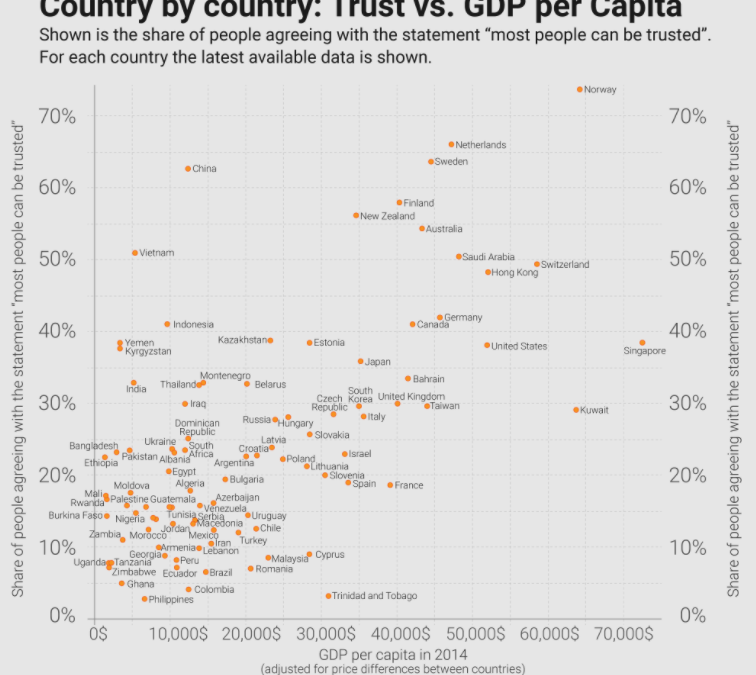Research indicates that the vast majority of highly successful organizations are High Trust Companies that have high-trust relationships with their stakeholders. After all, how can a leader, a company or an institution be effective without being trusted?
I invite you to check out the second part of my series entitled, “Trust: A Forever Work In Progress:” Part Two: What is Trust.
In it, I dig into the concept of Trust and its three dimensions. Here is the executive summary and action items from the original piece.
Executive Summary
- Trust supports the overall well-being of people, families, tribes, companies, communities and nations.
- Research makes it all but certain that the vast majority of highly successful organizations are High Trust Companies (HTCs) that have high-trust relationships with their stakeholders.
- Trust promotes stronger revenue growth, better margins, lower customer churn, less employee turnover, more innovation, better risk-adjusted returns on capital and healthier brands.
- One of the first comprehensive mathematical derivations of trust showed that trust reduces the transaction costs associated with investment decisions by increasing confidence in what the other party would do.
- Our social nature is anatomically inscribed in our brains…. Dopamine makes it feel good to collaborate and connect with others, which means that working together is something we have evolved to not only need but enjoy.
- It is very important that we understand that not only are there three dimensions of trust, but that one is “earned” (competency), one is “lost” (character) and one is “developed” (connection).
- Character-based trust is all about integrity (e.g., honest, fair, authentic) and intentions: Do we trust the other person’s intentions and, more specifically, are those intentions in conflict with mine or my needs?
- As we dig deeper into why some tribes didn’t / don’t get along, it becomes clear that oftentimes they just don’t trust the implications of the other tribe’s values.
- Trust is core to every relationship, that it is three dimensional, that each dimension is important, and that no leader nor company will go far without being trusted by the vast majority of its stakeholders.
Action Items
- Do work in a High Trust Company? Are there opportunities to increase one or more of the dimensions of trust across your organization?
- Can you increase the level of trust with your colleagues? Are there better ways, and / or should you create more opportunities to communicate and strengthen connections?
- Are your values aligned with those you Work with? If not, consider how that lack of alignment might impact your ability to Work together, your results, your business and your growth.
- Using the example of access to healthy water, a low trust company might create arbitrary restrictions (denying access) if a person says or does something others may reasonably disagree with. Is this helpful? Does this genuinely make life better? Are there areas of your business or relationships where that could happen? If so, look for ways to shift to a more humane, longer term oriented, approach.
You can find the essay here: https://markabbottglobal.medium.com/part-two-what-is-trust-97bd03c53548

